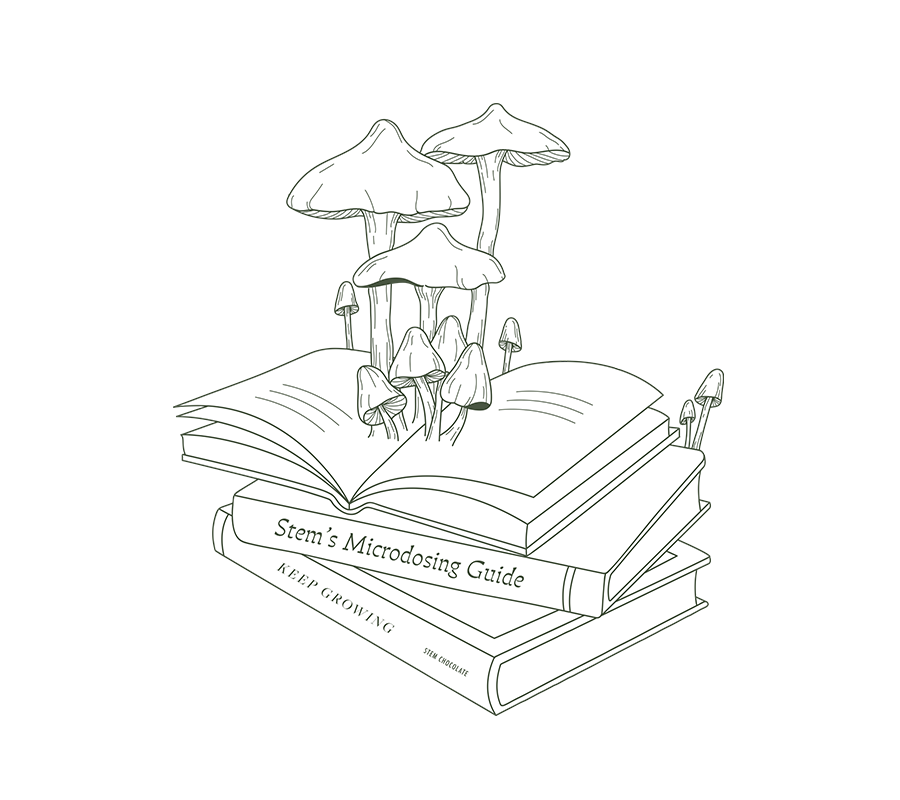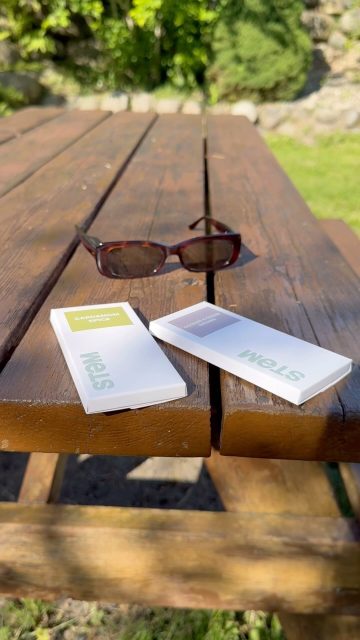Microdosing is a practice that involves taking small doses of psychedelics, such as mushrooms or LSD, for therapeutic or spiritual purposes. It has gained popularity in recent years, with many people claiming various benefits from it, including increased creativity, improved mood, and enhanced cognitive function.
Microdose mushrooms, also known as “magic mushrooms,” are a type of psychedelic mushroom that contains the compound psilocybin. This compound is responsible for the psychoactive effects of the mushroom and is the main component used in microdosing. The effects of microdose mushrooms are subtle and often described as a feeling of heightened awareness and clarity.
The duration of a microdose mushroom cycle can vary depending on individual factors and goals. However, a typical cycle lasts between four to six weeks, with a break of one or two days in between doses. This allows the body to reset and prevent tolerance from developing.
The recommended dosage for a microdose mushroom cycle is typically between 0.1-0.3 grams, taken every two to three days. Products like microdose mushroom chocolate can make this process more enjoyable. The dose should be small enough to not produce any intense psychoactive effects, but enough to elicit subtle changes in perception and mood.
Several factors can affect the duration of a microdose mushroom cycle, such as body weight, metabolism, and sensitivity to psychedelics. It is essential to start with a low dose and adjust accordingly, as everyone’s response to microdosing can vary.
It is crucial to listen to your body and pay attention to any signs that a microdose mushroom cycle should end. These signs may include increased anxiety, irritability, or changes in mood. If you experience any negative effects, it is best to discontinue the cycle and consult a healthcare professional.
While there is limited research on the long-term effects of microdosing, some people may experience potential risks such as increased heart rate and blood pressure, changes in vision, and altered perception of time. It is essential to approach microdosing with caution and under the guidance of a medical professional.
To safely end a microdose mushroom cycle, it is best to gradually decrease the frequency and dosage over a few weeks. Consulting a healthcare professional can also provide guidance and support during this process.
There are alternatives to a long-term microdose mushroom cycle, such as intermittent microdosing or macrodosing (taking a higher dose for a more intense experience). Other substances, such as LSD or ayahuasca, can also be used for microdosing, but it is essential to research and understand the risks and effects of each substance.
Microdose mushrooms can be consumed in various ways, such as dried and eaten, brewed into a tea, or taken in capsule form. Other substances commonly used for microdosing include LSD, MDMA, and DMT. It is essential to research and understand the effects of each substance before attempting microdosing.
What Is Microdosing?
Microdosing is a technique that involves consuming small doses of psychedelic substances, such as mushrooms, in order to experience subtle effects without hallucinations. This method is commonly used to improve focus, creativity, and overall well-being.
Microdosing regimens typically span over several weeks, with individuals taking a small dose every few days. The specific duration may vary based on personal preferences and objectives. It is crucial to note that microdosing should always be approached responsibly and with the guidance of a healthcare professional, as individual reactions to psychedelics can differ.
What Are Microdose Mushrooms?
Microdose mushrooms, also known as microdosing, is the practice of consuming small amounts of psychedelic mushrooms for their therapeutic benefits. These doses are considered sub-perceptual, meaning they do not cause hallucinogenic effects. The purpose of microdosing is to potentially enhance creativity, focus, and mood, as well as alleviate symptoms of depression and anxiety. This practice involves taking mushrooms every few days for several weeks or months. However, it is important to remember that microdosing is a personal practice and the duration of a microdose mushroom cycle may vary depending on individual needs and goals. It is recommended to begin with a lower dosage and gradually increase if needed, while regularly evaluating the effects.
What Are The Different Types Of Microdose Mushrooms?
Microdose mushrooms come in a variety of types, each with its own unique characteristics and effects. Some well-known types include Psilocybe cubensis, Psilocybe semilanceata, and Psilocybe cyanescens. These mushrooms vary in appearance, potency, and geographical distribution.
For instance, Psilocybe cubensis is one of the most prevalent and easily obtainable types, while Psilocybe semilanceata, also known as liberty caps, are typically found in grassy areas. It is essential to thoroughly research and understand the specific properties of each type before incorporating them into a microdosing regimen.
What Are The Benefits Of Microdosing Mushrooms?
Microdosing mushrooms can provide numerous benefits for those seeking alternative methods for improving their well-being. Some potential advantages of microdosing mushrooms include:
- A better mood
- Increased creativity
- Improved focus
- A reduction in symptoms of anxiety and depression
Studies have also shown that microdosing may have positive effects on cognitive functioning and problem-solving skills. In addition, many people report spiritual experiences and a stronger connection to nature after microdosing. It’s important to keep in mind that the effects of microdosing can vary from person to person, and it’s crucial to start with a small dose and consult with a healthcare professional. It’s a fact that microdosing is gaining popularity as a natural way to support mental and emotional wellness.
How Long Should A Microdose Mushroom Cycle Last?
A microdose mushroom cycle typically lasts for a specific duration to achieve optimal results and minimize potential risks. The ideal duration for a microdose mushroom cycle can vary depending on individual preferences and goals. Here are some steps to consider when determining the length of a microdose mushroom cycle:
- Start with a conservative approach, such as a cycle lasting one month.
- Observe the effects and benefits during this initial period.
- Adjust the duration based on personal experiences and desired outcomes.
- Consider extending the cycle up to three months for more significant and lasting effects.
- Monitor for any negative effects or tolerance buildup.
- Take breaks between cycles to allow the body to reset and avoid dependence.
- Consult with a healthcare professional or experienced microdoser for personalized guidance.
Remember, there is no one-size-fits-all answer to the question “How Long Should A Microdose Mushroom Cycle Last?” It is essential to listen to your body, monitor your experiences, and adjust accordingly for a safe and beneficial microdosing practice.
What Is The Recommended Dosage For A Microdose Mushroom Cycle?
The recommended dosage for a microdose mushroom cycle varies depending on the individual and the specific strain of mushrooms being used. However, a common guideline is to take a dose of 0.1 to 0.3 grams of dried mushrooms every three to four days. This low dose is intended to provide subtle effects without inducing a full psychedelic experience. It is important to start with a lower dose and gradually increase if needed, while closely monitoring the effects on mood, energy, and focus. Remember, it is always advisable to consult with a healthcare professional before starting any microdosing regimen.
Sarah, a working professional, started microdosing mushrooms with a recommended dosage of 0.1 grams every three days. She experienced improved creativity and focus without any negative side effects. After several weeks, she found her optimal dosage to be 0.2 grams, which allowed her to maintain productivity and mental clarity throughout her workdays. Sarah’s positive experience with microdosing mushrooms highlights the importance of finding the right dosage for individual needs and goals.
What Are The Factors That Affect The Duration Of A Microdose Mushroom Cycle?
The duration of a microdose mushroom cycle can be influenced by various factors. These factors include an individual’s metabolism, body weight, sensitivity to psychedelics, and desired outcomes.
Metabolism plays a role in how quickly the mushrooms are processed by the body, while body weight can determine the necessary dosage for desired effects. Sensitivity to psychedelics can vary among individuals, affecting the intensity and length of the experience. Additionally, the goals of the microdosing regimen, such as enhancing creativity or managing mood, can impact the duration of the cycle.
It is important to start with a low dose and gradually adjust to find the optimal duration for personal needs. Consulting with a healthcare professional is recommended to ensure safe and effective use.
What Are The Signs That A Microdose Mushroom Cycle Should End?
When microdosing mushrooms, there are indicators that can help determine when it is time to end a cycle. These signs may include:
- Excessive anxiety or irritability
- Persistent insomnia
- A decrease in the desired effects
If you begin to feel overwhelmed or if the positive changes you were seeking are no longer present, it may be a good idea to end the cycle. It is important to pay attention to your body and mind and make any necessary adjustments. Keep in mind that everyone is unique, so what works for one person may not work for another.
Fun Fact: Microdosing mushrooms gained popularity in Silicon Valley as a means to enhance creativity and problem-solving skills.
Are There Any Risks Associated With Long-term Microdosing?
It is important to consider potential risks when engaging in long-term microdosing of mushrooms. While there is limited research on this topic, it is important to be aware of potential side effects such as increased anxiety, mood changes, and altered perception. It is recommended to consult with a healthcare professional before starting a long-term microdosing regimen. They can offer guidance on dosage, duration, and monitor for any adverse effects. Remember, responsible and informed use is crucial when exploring the benefits and risks of microdosing mushrooms.
Fun Fact: According to a study published in the Journal of Psychopharmacology, long-term microdosing with LSD may lead to improvements in mood, creativity, and focus without significant adverse effects.
What Are The Potential Side Effects Of Long-term Microdosing?
Long-term microdosing of mushrooms may have potential side effects, although research is limited. Some reported side effects include increased anxiety, mood changes, insomnia, and difficulty concentrating. It is essential to monitor any negative effects and consider adjusting the dosage or stopping the cycle if necessary. Consulting with a healthcare professional is recommended before starting or continuing long-term microdosing.
In a true story, John, a regular microdoser, experienced persistent anxiety after several months of microdosing. He consulted his doctor, who advised him to take a break from microdosing. After discontinuing, John’s anxiety gradually improved, emphasizing the importance of being aware of potential side effects.
How Can One Safely End A Microdose Mushroom Cycle?
- Gradual reduction: Decrease the dosage incrementally over a period of time, such as reducing by 10% every few days.
- Monitor effects: Pay attention to any changes in mood, cognition, or physical sensations as you lower the dosage.
- Seek support: Communicate with a trusted friend or therapist to discuss your experience and any concerns you may have.
- Reflect and integrate: Take time to reflect on your microdosing journey and integrate the insights gained into your daily life.
- Self-care: Engage in self-care practices such as exercise, meditation, and healthy eating to support your overall well-being.
True story: After completing a three-month microdose mushroom cycle, Sarah gradually reduced her dosage over two weeks. She maintained open communication with her therapist, who provided guidance throughout the process. Sarah focused on self-care and integrated her newfound insights into her daily routine. By safely ending her microdose mushroom cycle, she felt empowered and experienced long-lasting positive effects on her mental well-being.
How Can One Safely End A Microdose Mushroom Cycle?
Are There Any Alternatives To A Long-term Microdose Mushroom Cycle?
When considering a microdose mushroom cycle, it’s important to explore alternatives to long-term use. While there is ongoing research on the benefits of microdosing, it’s crucial to prioritize safety and individual health.
Some alternatives to a long-term microdose mushroom cycle include:
- Intermittent use, where individuals take breaks between cycles to assess effects on mood and cognition.
- Occasional use, using microdosing as needed for specific situations or goals.
It’s essential to consult with a healthcare professional to determine the most suitable approach for your specific needs and circumstances.
What Are The Different Methods Of Consuming Microdose Mushrooms?
Consuming microdose mushrooms can be achieved through various methods, each with its own unique advantages. These methods include:
- Oral ingestion: This involves swallowing a capsule containing microdose mushrooms or mixing them with food or drink.
- Sublingual administration: Placing a microdose mushroom extract or tincture under the tongue allows for quick absorption into the bloodstream.
- Topical application: Applying a cream or ointment containing microdose mushrooms on the skin allows for slow absorption over time.
- Vaporization: Heating microdose mushroom powder or extract and inhaling the vapor provides rapid effects.
It’s important to keep in mind that the method of consumption can impact the onset and duration of the effects. It’s recommended to consult with a healthcare professional to determine the most suitable method for your individual needs.
What Other Substances Can Be Used For Microdosing?
When it comes to microdosing, it’s not just mushrooms that can be used. There are other substances that can be used for microdosing as well, such as LSD, psilocybin truffles, and mescaline. Each of these substances has its own unique effects and benefits, so it’s crucial to conduct thorough research before deciding which one to try. It’s also important to remember that microdosing should always be approached responsibly and under the guidance of a knowledgeable professional.
Pro-tip: Consult with a healthcare provider to determine which substance is best suited for your specific needs and goals.
Frequently Asked Questions
How long should a microdose mushroom cycle last?
The length of a microdose mushroom cycle can vary depending on personal preference and response. Some individuals may choose to follow the “Fadiman protocol,” which involves taking a microdose every third day for a period of several weeks. Others may choose to take a microdose every other day or even once a week. It is important to listen to your body and adjust your dosing schedule accordingly.
What factors should be considered when determining the length of a microdose mushroom cycle?
Some factors to consider when determining the length of a microdose mushroom cycle include personal goals, responsiveness to microdosing, pre-existing beliefs about microdosing, and any potential side effects. It is also important to consult with a medical professional and closely monitor your daily reports and any residual effects.
Is there any recommended timeframe for taking a break between microdose mushroom cycles?
It is generally recommended to take at least a 2-week break between microdose mushroom cycles to avoid building up a tolerance. This timeframe may vary depending on individual response and dosing schedule, so it is important to pay attention to your body and adjust accordingly.
Are there any known risks or potential side effects associated with microdose mushroom cycles?
Currently, there is limited research on the long-term effects of microdosing with psilocybin mushrooms. Some potential side effects that have been reported anecdotally include headaches, nausea, and increased heart rate. It is important to consult with a medical professional and carefully consider any potential risks before starting a microdose mushroom cycle.
Is there any scientific evidence to support the benefits of microdose mushroom cycles?
While there is a growing interest in microdosing and many anecdotal reports of its benefits, there is currently limited empirical evidence to support its effects on enhancing creativity, problem-solving skills, and psychological functioning. However, some observational studies have found small to medium improvements in mood and mental health after microdosing. The scientific community is still actively conducting research on the potential benefits and risks of microdosing with psilocybin mushrooms.
Should individuals who are interested in microdosing with psilocybin mushrooms rely solely on anecdotal benefits and online communities?
While anecdotal reports and online communities can provide valuable insights, it is important to note that they may not always be based on scientific evidence or reliable sources. It is recommended to seek guidance from a medical professional and consult peer-reviewed research studies before considering microdosing with psilocybin mushrooms. Additionally, it is important to note that microdosing is still illegal in most countries and should only be done under the supervision of a medical professional.













